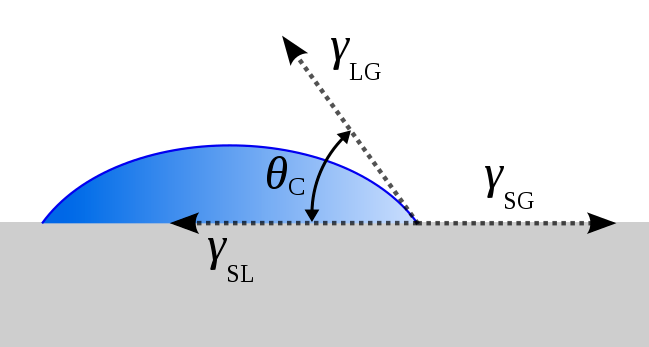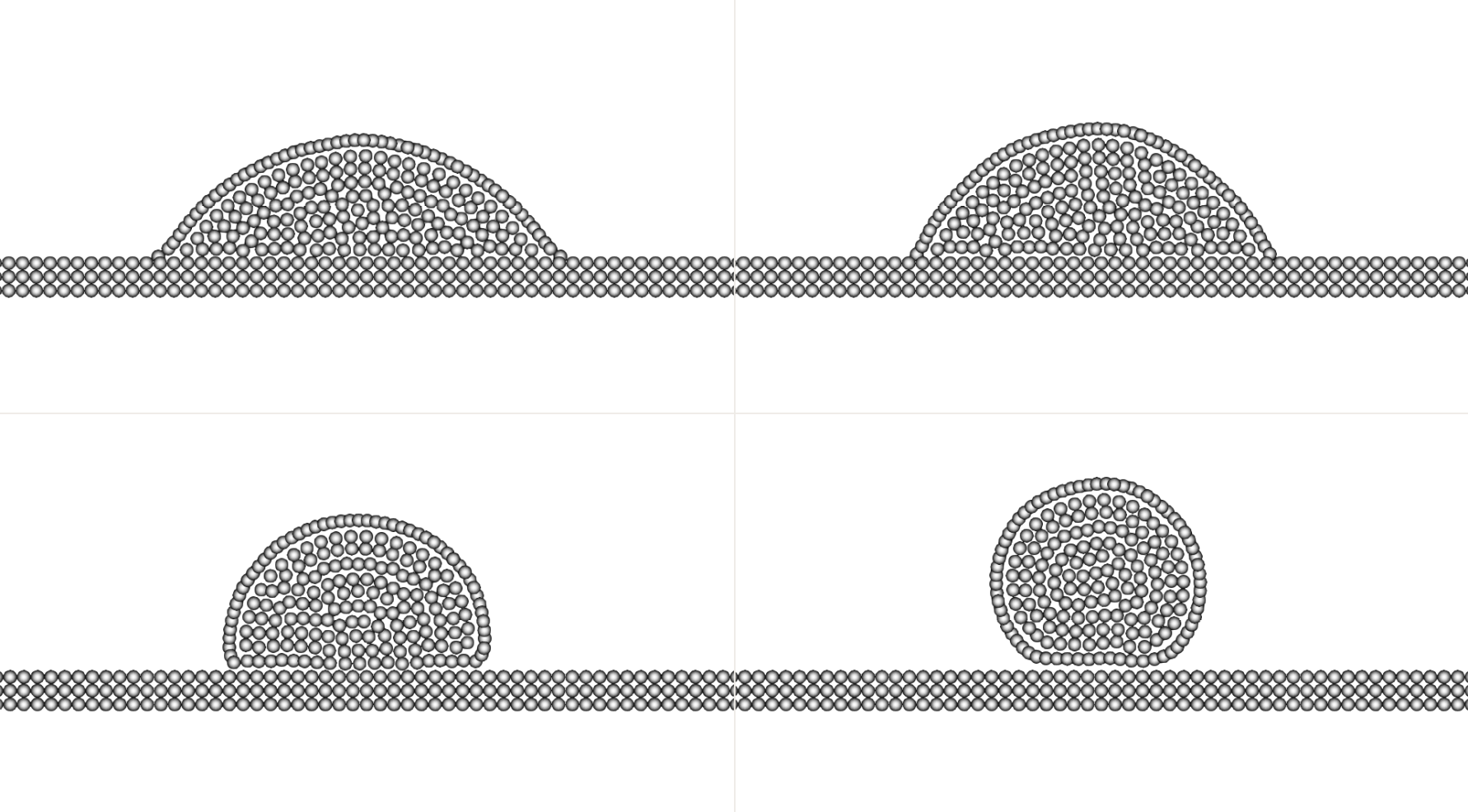Contact Angle
The default wetting behavior on walls for the TARTAKOVSKY2016_F1 surface tension model is neutral with a static contact angle of 90 degrees. Enabling the contact angle parameter allows simulation of different wetting behaviors in single phase flows (the only type of flows the model is currently recommended for).

Figure 1.

Figure 2.

Figure 3.
Wetting behavior is highly sensitive to numerical (particles aligned on a Cartesian grid) and experimental (surface type and cleanness) setups. This parameter should not be interpreted as a precise parameter down to a single degree, but rather an estimate of the wetting behavior in general (wetting/non-wetting to certain degrees).